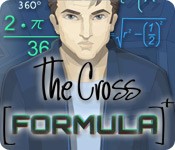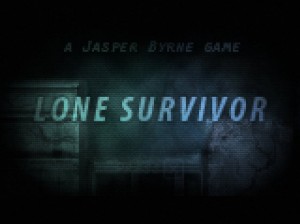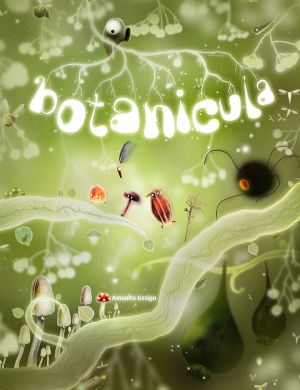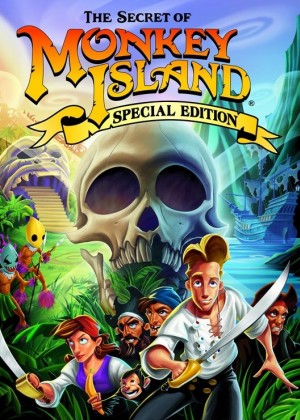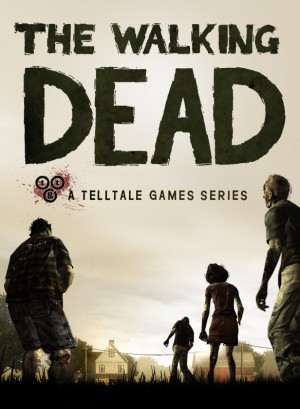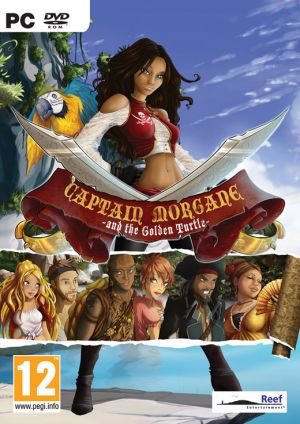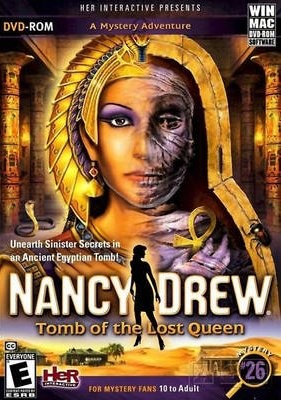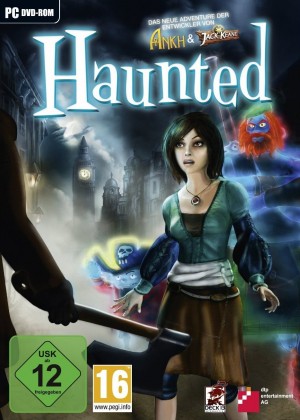Review for MacGuffin’s Curse
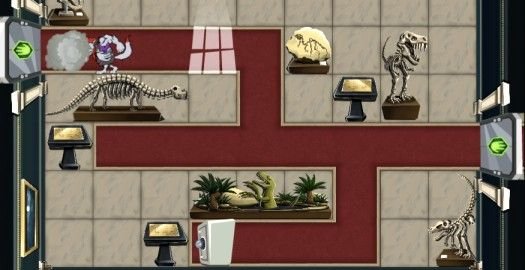
Do you like crate-pushing puzzles?
If your answer to that question expresses sentiments of apathy, boredom, or general disgust, then look away now; MacGuffin's Curse is definitely not the game for you. If, on the other hand, you relish the clearly defined parameters and logical challenge of a nicely designed block-shunting riddle, then read on, because the gameplay in Brawsome's charming new puzzler is almost literally nothing but. Nestled amongst the puzzles, however, there's also a strong atmosphere, interesting story and plenty of entertaining characters to meet.
Stage magician-turned-cat burglar Lucas MacGuffin is after a precious amulet to pay rent to his usurious landlord. Sneaking into the city museum, disaster strikes when the magical amulet binds to him and turns our hero into a werewolf – although he can turn back at will as long as he's standing in the moonlight. Unfortunately, corrupt millionaire Alphonse Connell is also after the amulet, initiating a city-wide alert to trap Lucas. With the amulet magically bound to him, Lucas must search for a way to remove it, but soon comes up against an even greater problem when Connell gets his hands – albeit momentarily – on the treasure. To bring down Alphonse, Lucas will need to gather plenty of evidence for a journalist out to prove his corruption to the city's inhabitants, along with finding a way to break the lycanthropic curse.
Progress comes almost exclusively from the block puzzles: after nabbing the trinket, the City of Feyre is placed into a 'security lockdown'. In gameplay terms, this plot conceit means that almost every room or area Lucas walks into has electronic doors which must be unlocked to proceed. Unlocking the doors consists of pushing a battery into a socket on the floor, but the route between the two is normally strewn with crates and other obstacles. This style of gameplay will be familiar to anyone who ever played old favourites like Chip's Challenge, Sokoban, or even SNES-era Legend of Zelda. Indeed, MacGuffin's Curse is presented rather like Zelda without the combat – each puzzle room is a self-contained challenge, represented graphically from a pseudo-top down perspective with characters and other elements drawn side-on. This game has a few tricks of its own, though. Being a werewolf has its advantages, and when Lucas finds an appropriate patch of moonlight he can become a hulking beast, capable of shunting crates and tripping pressure switches. Only as normal Lucas, however, can he swim, activate touch panels, turn doorknobs, and crack safes, etc. Switching back and forth between the two characters is the key to solving most of the head-scratching conundrums.
Because the transformations are limited to certain moonlit floor tiles, making the switch is more difficult than it sounds – and the limited space means that juggling and swapping the crates about becomes a series of increasingly complicated spatial puzzles. It's often a little reminiscent of the sliding-tile picture-puzzles that are found in so many other adventures. You'll quickly find that progress in one section of the room has blocked off access to another section or limited your ability to transform, so the challenge is in juggling all the elements in a tight space until you can complete every subgoal (using a crate to trip a switch, operating a panel to create a bridge across water, making sure that a door is open) and create a clear path to nudge the battery to the socket. Add in some further complicating factors – blocks that can be pushed but not pulled, underwater passages that can only be traversed as normal Lucas, doors that only open one way – and the puzzles swiftly become more taxing.
All this is controlled via the WASD keys in combination with a handful of action and menu keys, which makes perfect sense given the style of game. If there's a problem with the gameplay, it's the lack of variety. MacGuffin is a gratifyingly expansive game for an indie production, and you can expect over a dozen hours of entertainment – perhaps even more if you choose to complete the many completely optional sidequests, which range from delivering mittens to children to scaring biker gangs, along with plenty of old-fashioned thievery. However, the basic gameplay never really changes from the block-pushing format. There are occasional breaks for dialogue tree-based conversations (which sometimes take the form of a puzzle) and doing extra-curricular activities like turning loot into furniture for your flat at the local pawn shop. Most of your time, however, will be spent moving blocks around, and even for a seasoned puzzler, this can get a little grating (Or perhaps crating?) Because of this, MacGuffin is best enjoyed in small bursts – it's a series of snacks, not a meal. Along with PC and Mac, this game is being developed for iOS, which seems like a natural home for this structure.
What will keep you coming back is the story and the writing. The City of Feyre is an interesting sort of urban fantasy world – a little bit exaggerated and cartoonish, a little bit old-fashioned, a little bit high tech, but steeped in history of its own. There's a Neil Gaiman-meets-LucasArts vibe as you visit a generous array of locations, including a library, city hall, a park, a junkyard, mansion and more. The main plot, revolving around Lucas's rivalry with Connell and attempts to remove the amulet, is solid, full of escalation and backstory, although the ending is very abrupt and leaves one of the big questions unanswered. As well as Lucas and Alphonse, there is a supporting cast of quirky characters: an addled professor, a flirty fortune-teller, an abrasive reporter and an undercover cop are just a few. Detective Strump also wants to bring down Connell; he acts as your hint button, and can be summoned by radio to give a single hint if you're ever stuck in a room. These are normally helpful and clearly worded, although they may cover aspects of a hard puzzle that you've already worked out. He'll even offer to solve it for you if you're really in a jam. It's a useful feature, but the game isn't too difficult to complete without him.
An immense amount of effort has been put into one-line observations. Lucas can examine everything he sees, just like in old-school adventure titles. Even when two bookcases have the same graphic, Lucas (and wolf Lucas) will have unique things to say about each of them. Unfortunately, here it's a case of quantity over quality. The developer seems to be labouring under the burden of making everything hilarious – rather tellingly, one of the random spoof comments on the loading screen reads 'trying to be funny'. With so many gags to write, they can't all be winners, and they aren't. In fact, the miss-to-hit ratio for the humour is quite high, which is a shame. It comes, I believe, from trying to crowbar a joke in everywhere, even when tiresome or unnecessary. For example; the description for a photo of Alphonse pushing a granny under a bus gives a summary of this event and then reads “No apparent motive, except maybe he took the term “paint the town red” a little bit too literally”. These kind of almost-jokes are wedged into practically every description or observation. Sometimes they'll elicit a chuckle – “I used to read a lot. Now I write museum plaques for a living. Listen to your parents and take up sports.” – but it's normally more of a groan.
While some of the writing is a bit variable, the presentation is strong. It's not voiced, but there's fitting and unobtrusive background music, ranging from a smokey P.I. vibe to mournful strings and more exciting jazzy tunes in key moments. The comic book-style graphics are also attractive, particularly the character portraits, but sometimes a little bit amateurish – the water animation, which is obviously just a drawing being squashed around in a popular graphics program – is especially poor. Most of the background tiles, however, are nicely detailed and the main character animations are cute – the little dance Lucas does when he solves a room is charming.
Even with its decent production values and intriguing storyline, ultimately the decision about this game comes back to the one question that needs to be answered: Do you like crate puzzles? I do, and I had a perfectly pleasant time with MacGuffin's Curse. I suspect you might too.







